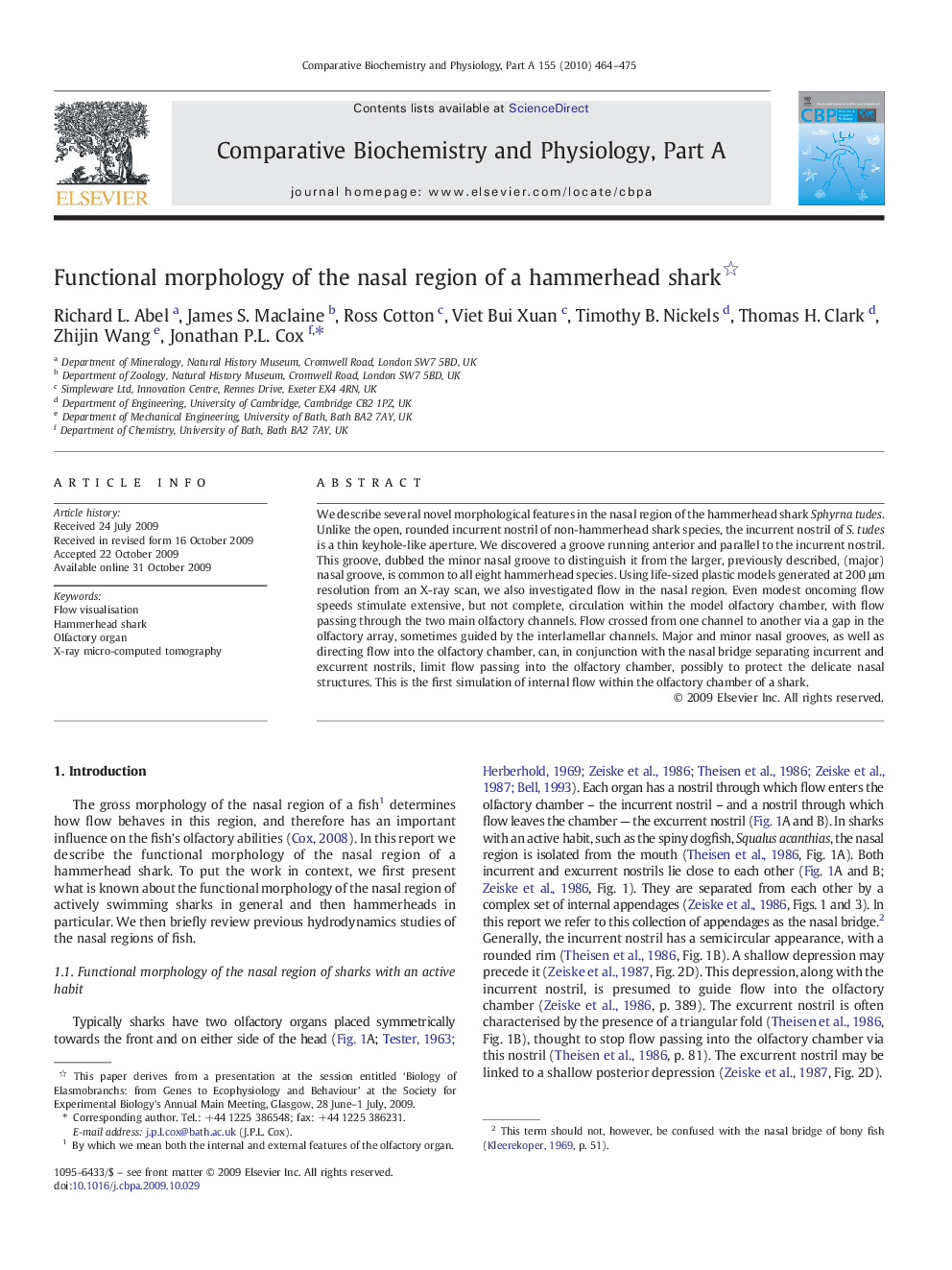| Article ID | Journal | Published Year | Pages | File Type |
|---|---|---|---|---|
| 1972987 | Comparative Biochemistry and Physiology Part A: Molecular & Integrative Physiology | 2010 | 12 Pages |
We describe several novel morphological features in the nasal region of the hammerhead shark Sphyrna tudes. Unlike the open, rounded incurrent nostril of non-hammerhead shark species, the incurrent nostril of S. tudes is a thin keyhole-like aperture. We discovered a groove running anterior and parallel to the incurrent nostril. This groove, dubbed the minor nasal groove to distinguish it from the larger, previously described, (major) nasal groove, is common to all eight hammerhead species. Using life-sized plastic models generated at 200 μm resolution from an X-ray scan, we also investigated flow in the nasal region. Even modest oncoming flow speeds stimulate extensive, but not complete, circulation within the model olfactory chamber, with flow passing through the two main olfactory channels. Flow crossed from one channel to another via a gap in the olfactory array, sometimes guided by the interlamellar channels. Major and minor nasal grooves, as well as directing flow into the olfactory chamber, can, in conjunction with the nasal bridge separating incurrent and excurrent nostrils, limit flow passing into the olfactory chamber, possibly to protect the delicate nasal structures. This is the first simulation of internal flow within the olfactory chamber of a shark.
